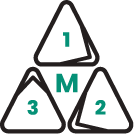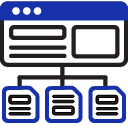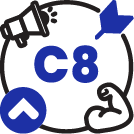The best sales teams follow the Customer Lifecycle all the way through, from Awareness and Prospecting to Growth and Retention. Focus should be on the full delivery of value to the customer, not just on signing the contract. Think: when you eat at a high-quality restaurant, would you expect the waiter to simply drop your food off at your table and never come back to make sure everything is good? No, because quality places want to ensure quality experiences. The same can be said in the world of sales - quality sellers want to ensure the customer receives quality!
In regards to the GTM team, this is why Customer Success teams and managers need to be fully integrated. It’s how you make sure your customer gets the value from your solution that you know it can deliver. So CS can do their best work, they need a smooth handover from the sales team. To facilitate that, both teams need to be on the same wavelength.
CS can use MEDDPICC as the common language to communicate with the wider GTM team. It ensures harmony throughout the Closing and Implementation stages and allows for essential information to be passed from the sales team to the post-sales team.
-
Metrics that were used to demonstrate the potential value to the customer become KPIs to strive for. These metrics are M3s and refer to the point at which the proposed measurable value becomes a goal that the GTM team set. Using M3s gives CS something to assess the customer’s success with your solution.
-
CS can identify the Economic Buyer by figuring out who the overall authority that the exec team should align and engage with is. The sales team will either have identified the Economic Buyer already, or have an idea as to who it is, and can give feedback to CS here.
-
The sales team can explain the customer’s Decision Criteria so CS can understand what the customer based their decision on from a technical, economic, and relationship perspective.
-
During the handover, CS can find out the customer’s Decision Process, which can be useful for upsells and renewals. This is especially helpful for ARR (Annual Recurring Revenue) or subscription-based businesses.
-
Details about the Paper Process can be shared, so CS knows what needs to be done to get official things agreed upon.
-
The pain that has been Implicated will show the post-sales team what the problems are that their solution is there to solve.
-
With a Champion clearly defined, the post-sales team can remain engaged and carry the deal through to success.
-
Information about the Competition can be communicated during the handover, so CS knows what alternatives exist for your solution, and who favors those alternatives.
During the Value stage, CS can focus on achieving the goals that have been set by striving towards converting their M3s into reality. At this stage, CS differentiates your solution from other alternatives as they demonstrate what makes your solution so elite. When customers are considering your solution in the future, the value CS deliver at this stage will influence their Decision Criteria as it so clearly elevates your solution above the rest.
In the final Growth and Retention stage, the customer will already have a certain idea of the value your solution provides, so CS can use M1s to introduce new use cases and/or modules to expand that value to keep helping your customers. The post-sales team can keep the Decision Process and Paper Process in mind in order to increase the predictability and efficiency of renewals and upsells. In addition to all of this, CS can collaborate with Marketing to capture the M3s that have successfully been achieved, and those M3s can re-enter the Customer Lifecycle as M1s!
The CS manager will want to use MEDDPICC as they look for opportunities to expand existing accounts. To do that, it is important to make sure they are quantifying the right value, engaging with the right stakeholders, and understanding that when it is time for renewal that they are looped in with the Paper Process and Decision Process.
With that, we are nearing the end of our series on the Go To Market team, but we’re not quite there yet! Join us next time for the final installment on RevOps!





.png)





.png)
























%201.png)








.png)

.png)
.png)
